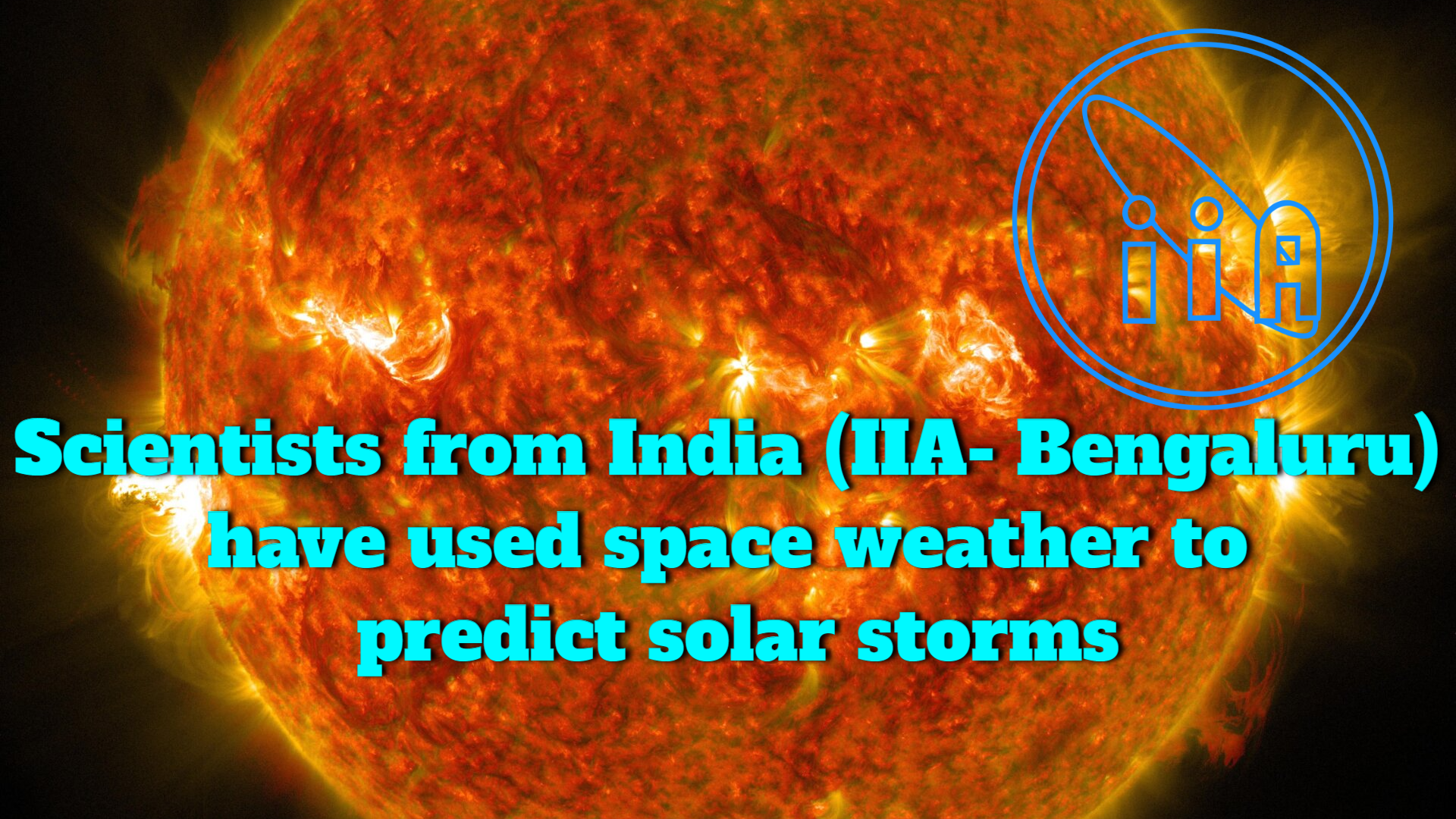Indian Institute of Astrophysics (IIA) astronomers have demonstrated that space weather can be used to predict solar storms. According to the study, space weather tracking can help protect communication satellites and help interpret data from the upcoming ISRO Aditya-L1 mission, India’s first solar mission.
Key Highlight:
- Indian Institute of Astrophysics Bengaluru astrologers have demonstrated through a study that solar storms can be predicted using events such as Coronal Mass Ejections (CME)
- The study argues that these predictions can be extremely useful in tracking space weather to protect communication satellites and help interpret data from the upcoming ISRO Aditya-L1 solar mission.
- However, they also pointed out that it’s difficult to accurately predict the emergence of large CME structures anywhere on the sun.
Indian Institute of Astrophysics Bengaluru astrologers have demonstrated through a study that solar storms can be predicted using events such as Coronal Mass Ejections (CME). The study, published in the journal Monthly Notices of Royal Astronomy, argues that these predictions can be extremely useful in tracking space weather to protect communication satellites and help interpret data from the upcoming ISRO Aditya-L1 solar mission, India’s first one. Some experts have even predicted the internet apocalypse before a strong solar storm occurs.
ISRO’s Aditya L1 Mission Prep Has Scientists Studying Solar Storms, Sun’s CME
— Rising Bharat (@RisingBharat_) September 23, 2021
A team of astronomers from the Indian Institute of Astrophysics have now shed light on how conditions and events in the Sun’s atmosphere such as CMEs affect the accuracy of space weather prediction 1/3 pic.twitter.com/qr9m7344WN
What were the astronomers able to discover?
Dr. Wageesh Mishra’s team of astronomers explained that the space weather near the Earth is primarily driven by Coronal Mass Ejections (CMEs), which are frequent explosive expulsions of huge magnetized plasma from the Sun into its surroundings, which can blow past the Earth. Earth’s space environment, including the solar winds, can impact space- and ground-based technological systems.
Science and technology ministerial release says astronomers have discovered that plasma properties and Earth arrival times for solar coronal mass ejections can vary greatly depending on where they are in interplanetary space along a given longitudinal axis of rotation. It has been reported that the plasma characteristics and arrival times of a CME-driven shock propagating in an inhomogeneous medium may be different along the heliosphere’s length, according to lead researcher Dr. Mishra.
For accurate space weather predictions, prior knowledge of the pre-conditioned ambient solar wind medium is required, as this helps determine when CMEs will arrive. However, they also pointed out that it’s difficult to accurately predict the emergence of large CME structures anywhere on the sun.
What’s the big deal about solar winds?
Massive solar flare-ups are cause for concern because they can disrupt communications on Earth and even cause damage that was not anticipated. Researchers at California University, including Sangeetha Abdu Jyothi, have predicted a global internet blackout in 2021 due to a powerful solar storm. Even underwater cables will be vulnerable to the Sun’s wrath due to these high winds, and as a result, satellites in low Earth orbit will be wiped off the face of the Earth.
New work by our faculty member Dr Vemareddy on how one can distinguish between solar flares and coronal mass ejection. Read all about it … https://t.co/alqDzo3YT4@fiddlingstars @IndiaDST
— IIAstrophysics (@IIABengaluru) October 20, 2021
This study be helpful for the upcoming Aditya L1 mission that’ll be launched by the ISRO to help us better understand the Sun and its behaviour.
— Rising Bharat (@RisingBharat_) September 23, 2021
The research is based on the study of observations of Interplanetary CME structures that were spotted throughout the year 2011. 2/3 pic.twitter.com/gj2QJAOWT4




